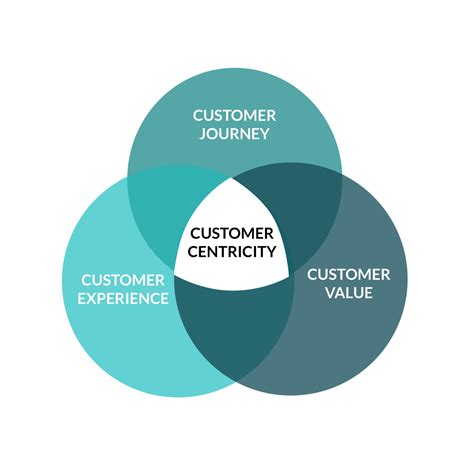Introduction

In an increasingly competitive and globalized business landscape, the pursuit of customer-centricity has emerged as a paramount strategy for organizations seeking to thrive. The relentless march of technological advancements, coupled with evolving consumer expectations, has rendered customer-centricity indispensable for businesses striving to differentiate themselves and drive long-term success. This article delves into the compelling rationale for customer-centricity, exploring its multifaceted benefits and providing actionable insights for businesses seeking to embrace this transformative approach.
The Evolving Role of Customers in Today’s Economy
Over the past decade, the dynamics of customer engagement have undergone a profound transformation. Empowered by ubiquitous internet access and an abundance of information at their fingertips, today’s consumers are more informed, discerning, and vocal than ever before. This heightened level of customer awareness has shifted the balance of power from businesses to customers, making it imperative for organizations to prioritize customer satisfaction above all else.
The Business Case for Customer-Centricity
The benefits of customer-centricity are undeniable and far-reaching. Businesses that prioritize customer needs consistently outperform their competitors in key performance indicators such as:
- Increased revenue: Customer-centric companies generate higher sales volumes through enhanced customer loyalty and repeat purchases.
- Reduced costs: By addressing customer pain points and resolving issues proactively, customer-centric businesses minimize customer churn and reduce the need for costly after-sales support.
- Improved profitability: Satisfied customers are more likely to refer new business to a company, leading to increased revenue streams and improved profitability.
Key Pillars of Customer-Centricity
A truly customer-centric organization operates on a foundation of several fundamental pillars:
- Customer empathy: Understanding and empathizing with customer needs is the cornerstone of customer-centricity. This involves actively listening to customer feedback, conducting thorough market research, and creating personas that represent target customer segments.
- Customer focus: Customer-centric businesses align their entire operations around meeting and exceeding customer expectations. This includes implementing customer-focused processes, developing products and services that address customer needs, and empowering employees to resolve customer issues swiftly and effectively.
- Customer engagement: Customer-centric organizations foster ongoing engagement with their customers through multiple channels, including social media, email marketing, and personalized experiences. This engagement enables businesses to stay abreast of customer preferences and continuously improve their offerings.
- Customer feedback: Regularly seeking and incorporating customer feedback into business decisions is essential for customer-centricity. This involves surveys, customer advisory boards, and other feedback mechanisms that provide valuable insights into customer perceptions and areas for improvement.
Harnessing Technology to Enhance Customer-Centricity
In today’s digital age, technology plays a pivotal role in enabling customer-centricity. Advanced technologies such as artificial intelligence (AI), data analytics, and cloud computing provide businesses with unprecedented opportunities to:
- Personalize customer experiences: AI algorithms can analyze customer behavior to deliver customized recommendations, tailored marketing messages, and personalized content.
- Automate customer interactions: Chatbots, AI-powered virtual assistants, can provide 24/7 customer support, handle common queries, and resolve issues promptly and efficiently.
- Collect and analyze customer data: Data analytics tools help businesses gather and interpret vast amounts of customer data, enabling them to identify trends, make informed decisions, and optimize customer experiences.
Common Pitfalls to Avoid in Customer-Centricity
While the benefits of customer-centricity are numerous, certain pitfalls can derail its implementation. Some of the most common mistakes to avoid include:
- Lack of customer focus: Neglecting to genuinely prioritize customer needs can lead to superficial customer-centric initiatives that fail to deliver tangible results.
- Inconsistent customer experience: A disjointed customer experience across different channels can erode customer trust and impede customer loyalty.
- Overemphasis on technology: While technology can enhance customer-centricity, it should not overshadow human interaction and genuine empathy in customer relationships.
- Limited customer feedback: Failing to actively seek and incorporate customer feedback can prevent businesses from understanding customer needs and adapting their offerings accordingly.
Practical Strategies for Embracing Customer-Centricity
Organizations seeking to embrace customer-centricity can implement the following practical strategies:
- Develop a customer-centric culture: Foster a company culture where every employee understands and embraces the importance of customer satisfaction.
- Define clear customer value propositions: Articulate a compelling value proposition that clearly outlines how your products or services address specific customer needs.
- Implement customer-centric processes: Establish well-defined processes that ensure customer issues are resolved promptly and efficiently.
- Empower frontline employees: Provide frontline employees with the authority and resources to make decisions that enhance customer experiences.
- Use data to inform decisions: Leverage customer data to gain insights into customer behavior, improve decision-making, and optimize customer-facing initiatives.
Conclusion
In today’s rapidly evolving business environment, customer-centricity is no longer merely an option but an imperative for organizations seeking to thrive. By genuinely prioritizing customer needs, leveraging technology to enhance customer experiences, and avoiding common pitfalls, businesses can reap the myriad benefits of customer-centricity, including increased revenue, reduced costs, and enhanced profitability. The journey towards customer-centricity is an ongoing one, requiring a sustained commitment to understanding and meeting the ever-changing needs of customers. By embracing customer-centricity with unwavering dedication, businesses can build enduring relationships with their customers, foster brand loyalty, and drive long-term growth.
